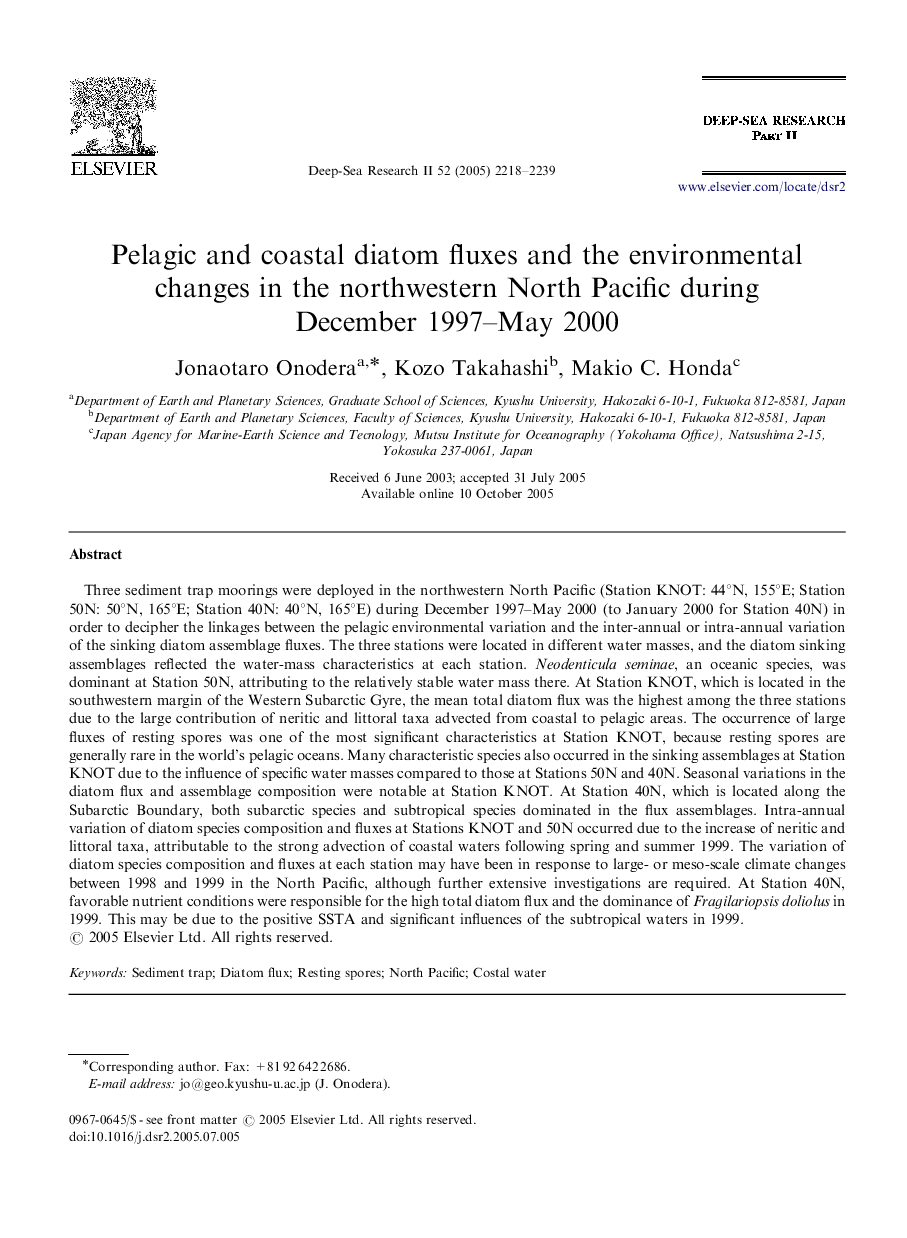| کد مقاله | کد نشریه | سال انتشار | مقاله انگلیسی | نسخه تمام متن |
|---|---|---|---|---|
| 4537684 | 1626523 | 2005 | 22 صفحه PDF | دانلود رایگان |

Three sediment trap moorings were deployed in the northwestern North Pacific (Station KNOT: 44°N, 155°E; Station 50N: 50°N, 165°E; Station 40N: 40°N, 165°E) during December 1997–May 2000 (to January 2000 for Station 40N) in order to decipher the linkages between the pelagic environmental variation and the inter-annual or intra-annual variation of the sinking diatom assemblage fluxes. The three stations were located in different water masses, and the diatom sinking assemblages reflected the water-mass characteristics at each station. Neodenticula seminae, an oceanic species, was dominant at Station 50N, attributing to the relatively stable water mass there. At Station KNOT, which is located in the southwestern margin of the Western Subarctic Gyre, the mean total diatom flux was the highest among the three stations due to the large contribution of neritic and littoral taxa advected from coastal to pelagic areas. The occurrence of large fluxes of resting spores was one of the most significant characteristics at Station KNOT, because resting spores are generally rare in the world's pelagic oceans. Many characteristic species also occurred in the sinking assemblages at Station KNOT due to the influence of specific water masses compared to those at Stations 50N and 40N. Seasonal variations in the diatom flux and assemblage composition were notable at Station KNOT. At Station 40N, which is located along the Subarctic Boundary, both subarctic species and subtropical species dominated in the flux assemblages. Intra-annual variation of diatom species composition and fluxes at Stations KNOT and 50N occurred due to the increase of neritic and littoral taxa, attributable to the strong advection of coastal waters following spring and summer 1999. The variation of diatom species composition and fluxes at each station may have been in response to large- or meso-scale climate changes between 1998 and 1999 in the North Pacific, although further extensive investigations are required. At Station 40N, favorable nutrient conditions were responsible for the high total diatom flux and the dominance of Fragilariopsis doliolus in 1999. This may be due to the positive SSTA and significant influences of the subtropical waters in 1999.
Journal: Deep Sea Research Part II: Topical Studies in Oceanography - Volume 52, Issues 16–18, August–September 2005, Pages 2218–2239